The Effect of Age and Gender on the Distance Between the Maxillary Sinus Cortical Bone and Maxillary Molars: A Cone-Beam Tomography Analysis
Abstract
1. Introduction
2. Materials and Methods
Statistical Analysis
3. Results
3.1. Overall Comparison Between Genders
3.2. Adult vs.Elderly Tooth Comparison
4. Discussion
5. Conclusions
Author Contributions
Funding
Institutional Review Board Statement
Informed Consent Statement
Data Availability Statement
Acknowledgments
Conflicts of Interest
References
- Anbiaee, N.; Khodabakhsh, R.; Bagherpour, A. Relationship between Anatomical Variations of Sinonasal Area and Maxillary Sinus Pneumatization. Iran. J. Otorhinolaryngol. 2019, 31, 229–234. [Google Scholar] [PubMed]
- Ferguson, M. Rhinosinusitis in oral medicine and dentistry. Aust. Dent. J. 2014, 59, 289–295. [Google Scholar] [CrossRef] [PubMed]
- Chen, H.J.; Chen, H.S.; Chang, Y.L.; Huang, Y.C. Complete Unilateral Maxillary Sinus Opacity in Computed Tomography. J. Formos. Med. Assoc. 2010, 109, 709–715. [Google Scholar] [CrossRef]
- Brook, I. Sinusitis of odontogenic origin. Otolaryngol. Head Neck Surg. 2006, 135, 349–355. [Google Scholar] [CrossRef] [PubMed]
- Fischborn, A.R.; Andreis, J.D.; Wambier, L.M.; Pedroso, C.M.; Claudino, M.; Franco, G.C.N. Performance of panoramic radiography compared with computed tomography in the evaluation of pathological changes in the maxillary sinuses: A systematic review and meta-analysis. Dentomaxillofac. Radiol. 2023, 52, 20230067. [Google Scholar] [CrossRef]
- Zhang, J.; Liu, L.; Yang, L.; Wang, J.; Tan, X.; Huang, D. Diagnosis of Odontogenic Maxillary Sinusitis by Cone-beam Computed Tomography: A Critical Review. J. Endod. 2023, 49, 1445–1456. [Google Scholar] [CrossRef]
- De Cock, J.; Zanca, F.; Canning, J.; Pauwels, R.; Hermans, R. A comparative study for image quality and radiation dose of a cone beam computed tomography scanner and a multislice computed tomography scanner for paranasal sinus imaging. Eur. Radiol. 2015, 25, 1891–1900. [Google Scholar] [CrossRef]
- Kruse, C.; Spin-Neto, R.; Wenzel, A.; Kirkevang, L.L. Cone beam computed tomography and periapical lesions: A systematic review analysing studies on diagnostic efficacy by a hierarchical model. Int. Endod. J. 2015, 48, 815–828. [Google Scholar] [CrossRef]
- Nagendrababu, V.; Murray, P.E.; Ordinola-Zapata, R.; Peters, O.A.; Rôças, I.N.; Siqueira, J.F.; Priya, E.; Jayaraman, J.; Pulikkotil, S.J.; Camilleri, J.; et al. PRILE 2021 guidelines for reporting laboratory studies in Endodontology: A consensus-based development. Int. Endod. J. 2021, 54, 1482–1490. [Google Scholar] [CrossRef]
- Oberli, K.; Bornstein, M.M.; von Arx, T. Periapical surgery and the maxillary sinus: Radiographic parameters for clinical outcome. Oral Surg. Oral Med. Oral Pathol. Oral Radiol. Endodontol. 2007, 103, 848–853. [Google Scholar] [CrossRef]
- Amani, R.; Noroozi, M.; Ashrafi, M.M.S. Assessment of the relationships between posterior root apices and the maxillary sinus floor: A comparison of panoramic radiography and cone beam computed tomography. Gen. Dent. 2023, 71, 58–63. [Google Scholar] [PubMed]
- Aguori, E.A.B.; Ersan, N.; Dölekoğlu, Z.S.; Ilgüy, D. Proximity of healthy posterior teeth to the maxillary sinus floor in relation to mucosal thickening: A CBCT study. Oral. Radiol. 2023, 39, 536–543. [Google Scholar] [CrossRef] [PubMed]
- Jung, Y.H.; Cho, B.H.; Hwang, J.J. Analysis of the root position and angulation of maxillary premolars in alveolar bone using cone-beam computed tomography. Imaging Sci. Dent. 2022, 52, 10–13. [Google Scholar] [CrossRef]
- Altaweel, A.A.; Sowairi, S.M.S.; Sapri, A.M.S.; Saeedi, S.A.; Alamri, A.H.; Alnobi, A.A.; Alsharif, M.F.; Altokhi, A.M.A.; Abbas, H. Assessment of the Relationship between Maxillary Posterior Teeth and Maxillary Sinus Using Cone-Beam Computed Tomography. Int. J. Dent. 2022, 2022, 6254656. [Google Scholar] [CrossRef]
- Regnstrand, T.; Torres, A.; Petitjean, E.; Lambrechts, P.; Benchimol, D.; Jacobs, R. CBCT-based assessment of the anatomic relationship between maxillary sinus and upper teeth. Clin. Exp. Dent. Res. 2021, 7, 1197–1204. [Google Scholar] [CrossRef] [PubMed]
- Razumova, S.; Brago, A.; Howijieh, A.; Manvelyan, A.; Barakat, H.; Baykulova, M. Evaluation of the relationship between the maxillary sinus floor and the root apices of the maxillary posterior teeth using cone-beam computed tomographic scanning. J. Conserv. Dent. 2019, 22, 139. [Google Scholar]
- Tian, X.-M.; Qian, L.; Xin, X.-Z.; Wei, B.; Gong, Y. An Analysis of the Proximity of Maxillary Posterior Teeth to the Maxillary Sinus Using Cone-beam Computed Tomography. J. Endod. 2016, 42, 371–377. [Google Scholar] [CrossRef]
- Makris, L.M.L.; Devito, K.L.; D’Addazio, P.S.S.; Lima, C.O.; Campos, C.N. Relationship of maxillary posterior roots to the maxillary sinus and cortical bone: A cone beam computed tomographic study. Gen. Dent. 2020, 68, e1–e4. [Google Scholar]
- Aktuna Belgin, C.; Bayrak, S.; Atakan, C. Determination of alveolar bone height according to the relationship between molar teeth and maxillary sinus. Oral. Maxillofac. Surg. 2021, 25, 175–180. [Google Scholar] [CrossRef]
- Gu, Y.; Sun, C.; Wu, D.; Zhu, Q.; Leng, D.; Zhou, Y. Evaluation of the relationship between maxillary posterior teeth and the maxillary sinus floor using cone-beam computed tomography. BMC Oral Health 2018, 18, 164. [Google Scholar] [CrossRef]
- Liu, S.; Chen, X.; Wang, X.X.; Li, Y.; Feng, J.; Wang, X. Association between odontogenic conditions and maxillary sinus abnormalities: A retrospective cone-beam computed-tomographic study. Ann. Palliat. Med. 2023, 12, 365–375. [Google Scholar] [CrossRef] [PubMed]
- Carrion, S.J.; Coelho, M.S.; Soares, A.d.J.; Frozoni, M. Apical periodontitis in mesiobuccal roots of maxillary molars: Influence of anatomy and quality of root canal treatment, a CBCT study. Restor. Dent. Endod. 2022, 47, e37. [Google Scholar] [CrossRef] [PubMed]
- Choi, Y.J.; Kim, Y.H.; Han, S.-S.; Jung, U.-W.; Lee, C.; Lee, A.; Jeon, K.J. Alveolar bone height according to the anatomical relationship between the maxillary molar and sinus. J. Periodontal. Implant Sci. 2020, 50, 38. [Google Scholar] [CrossRef] [PubMed]
- Aktuna Belgin, C.; Colak, M.; Adiguzel, O.; Akkus, Z.; Orhan, K. Three-dimensional evaluation of maxillary sinus volume in different age and sex groups using CBCT. Eur. Arch. Oto-Rhino-Laryngol. 2019, 276, 1493–1499. [Google Scholar] [CrossRef]
- Ahn, N.L.; Park, H.S. Differences in distances between maxillary posterior root apices and the sinus floor according to skeletal pattern. Am. J. Orthod. Dentofac. Orthop. 2017, 152, 811–819. [Google Scholar] [CrossRef]
- Costea, M.C.; Bondor, C.I.; Muntean, A.; Badea, M.E.; Mesaroş, A.Ş.; Kuijpers-Jagtman, A.M. Proximity of the roots of posterior teeth to the maxillary sinus in different facial biotypes. Am. J. Orthod. Dentofac. Orthop. 2018, 154, 346–355. [Google Scholar] [CrossRef]
- Taloyildirim, T.; Öztekin, F.; Tözüm, M.D. Topographic relationship between maxillary sinus and roots of posterior teeth: A cone beam tomographic analysis. Eur. Oral. Res. 2021, 55, 39–44. [Google Scholar]
- de Barros, F.; Fernandes, C.M.d.S.; Kuhnen, B.; Filho, J.S.; Gonçalves, M.; Gonçalves, V.; Serra, M.d.C. Three-dimensional analysis of the maxillary sinus according to sex, age, skin color, and nutritional status: A study with live Brazilian subjects using cone-beam computed tomography. Arch. Oral. Biol. 2022, 139, 105435. [Google Scholar] [CrossRef]
- Nurbakhsh, B.; Friedman, S.; Kulkarni, G.V.; Basrani, B.; Lam, E. Resolution of maxillary sinus mucositis after endodontic treatment of maxillary teeth with apical periodontitis: A cone-bean computed tomography pilot study. J. Endod. 2011, 37, 1504–1511. [Google Scholar] [CrossRef]
- Bornstein, M.M.; Wasmer, J.; Janner, S.F.M.; Buser, D.; Arx, T.V. Characteristics and dimensions of the schneiderianmembrane and apical bone in maxillary molars referred for apical surgery: A comparative radigraphic analysis using limited cone beam computed tomography. J. Endod. 2012, 38, 51–57. [Google Scholar] [CrossRef]
- Coutinho, T.M.d.C. Associação entre a Periodontite Apical Crônica e o Espessamento da Membrana Sinusal: Estudo Transversal Retrospectivo com Utilização da Tomografiacomputadorizadaporfeixecônico. 93f. Master’s Dissertation, Universida de Estácio de Sá, Rio de Janeiro, Brazil, 2016. [Google Scholar]
- Coutinho, T.M.d.C. Associação entre Periodontite Apical Crônica e Alterações da Membrana Sinusal e do Seiomaxilar: Estudo Transversal Retrospectivo com Utilização de Tomografiacomputadorizadaporfeixecônico. 100f. Ph.D. Thesis, Universida de Estácio de Sá, Rio de Janeiro, Brazil, 2020. [Google Scholar]
- Lima, A.D.; Benetti, F.; Ferreira, L.L.; Dezan-Júnior, E.; Gomes-Filho, J.E.; Cintra, L.T.A. Aplicações Endodônticas da Tomografia Computadorizada Cone-beam. BJSCR 2014, 3, 30–39. [Google Scholar]
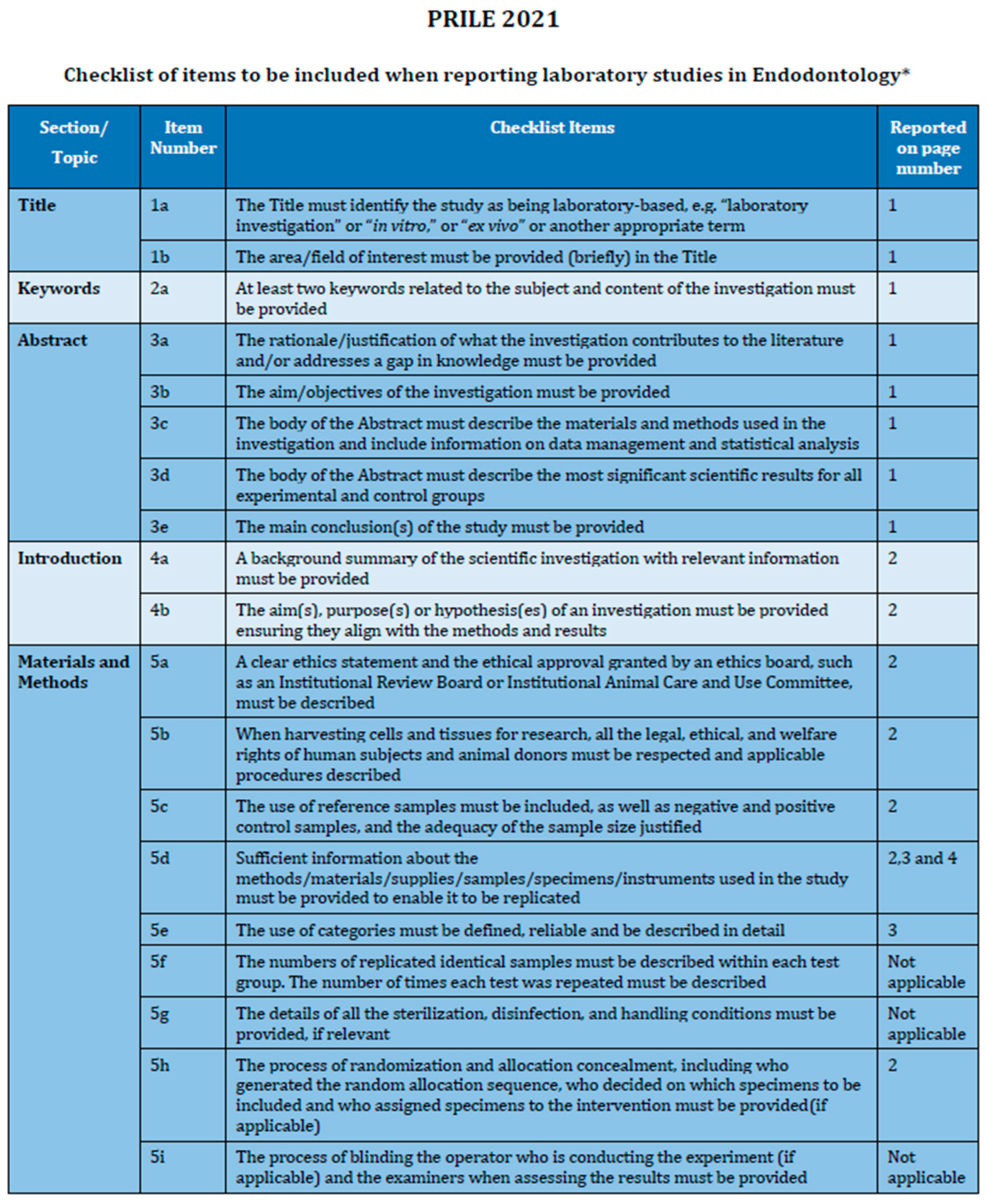
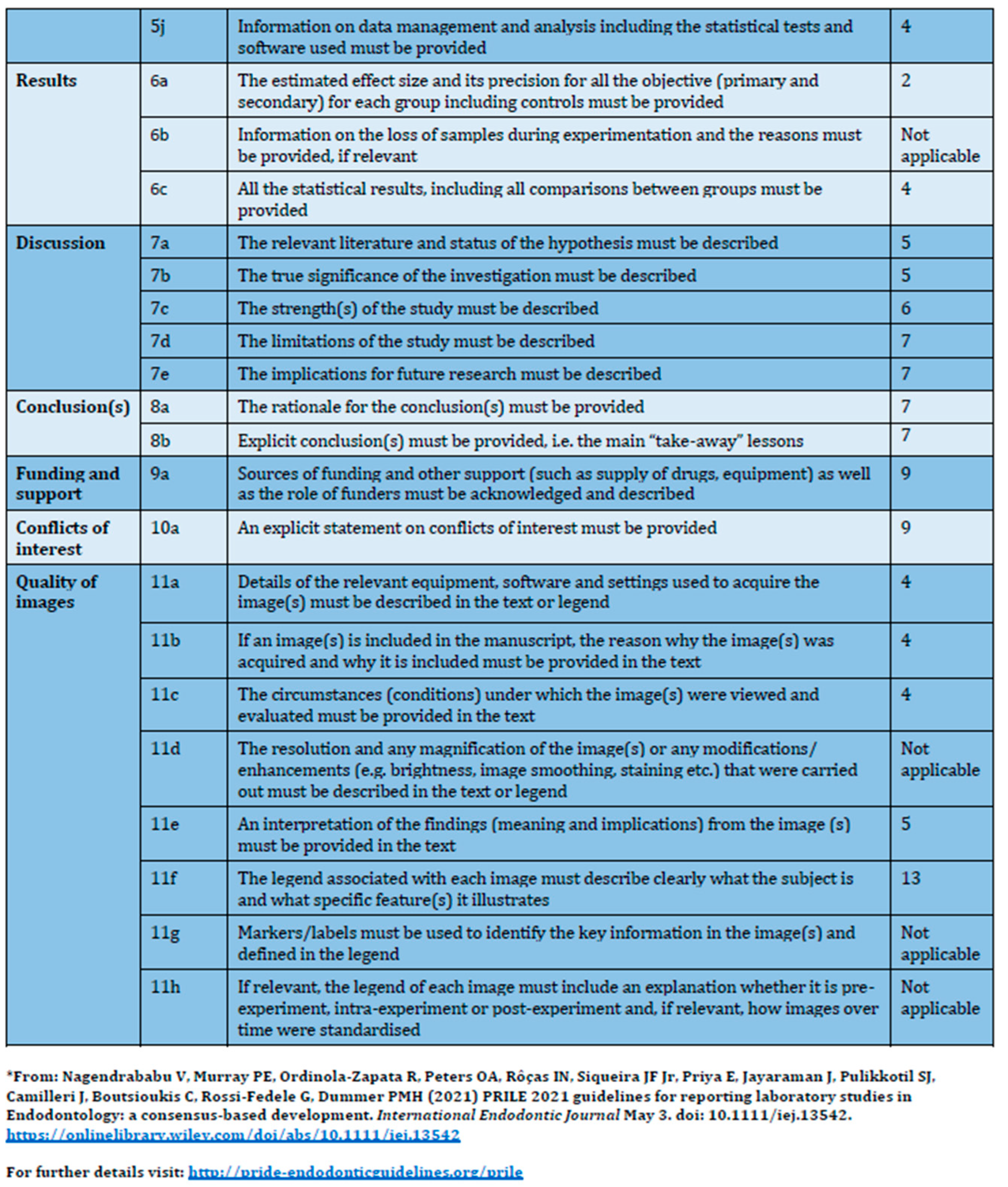
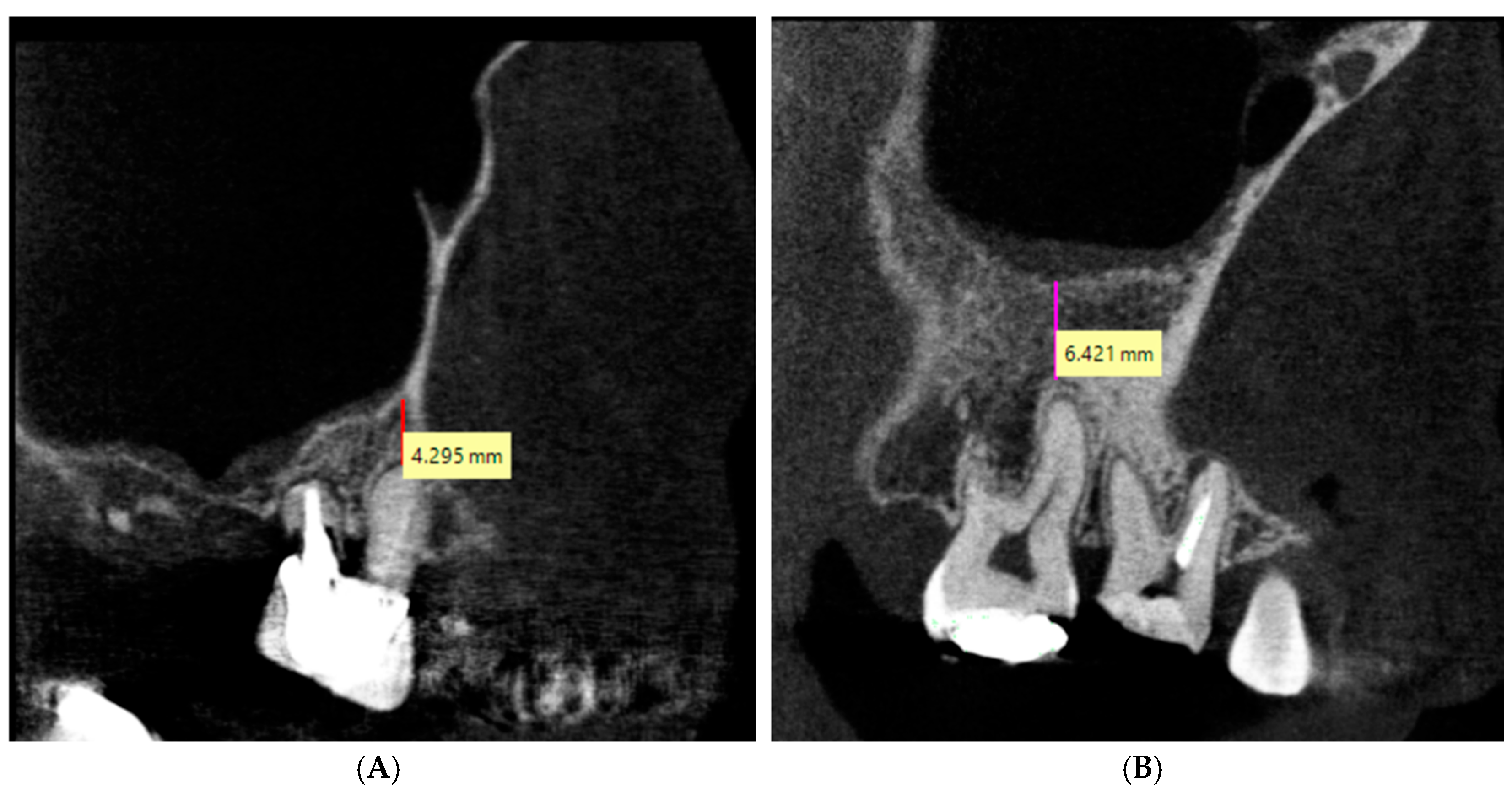

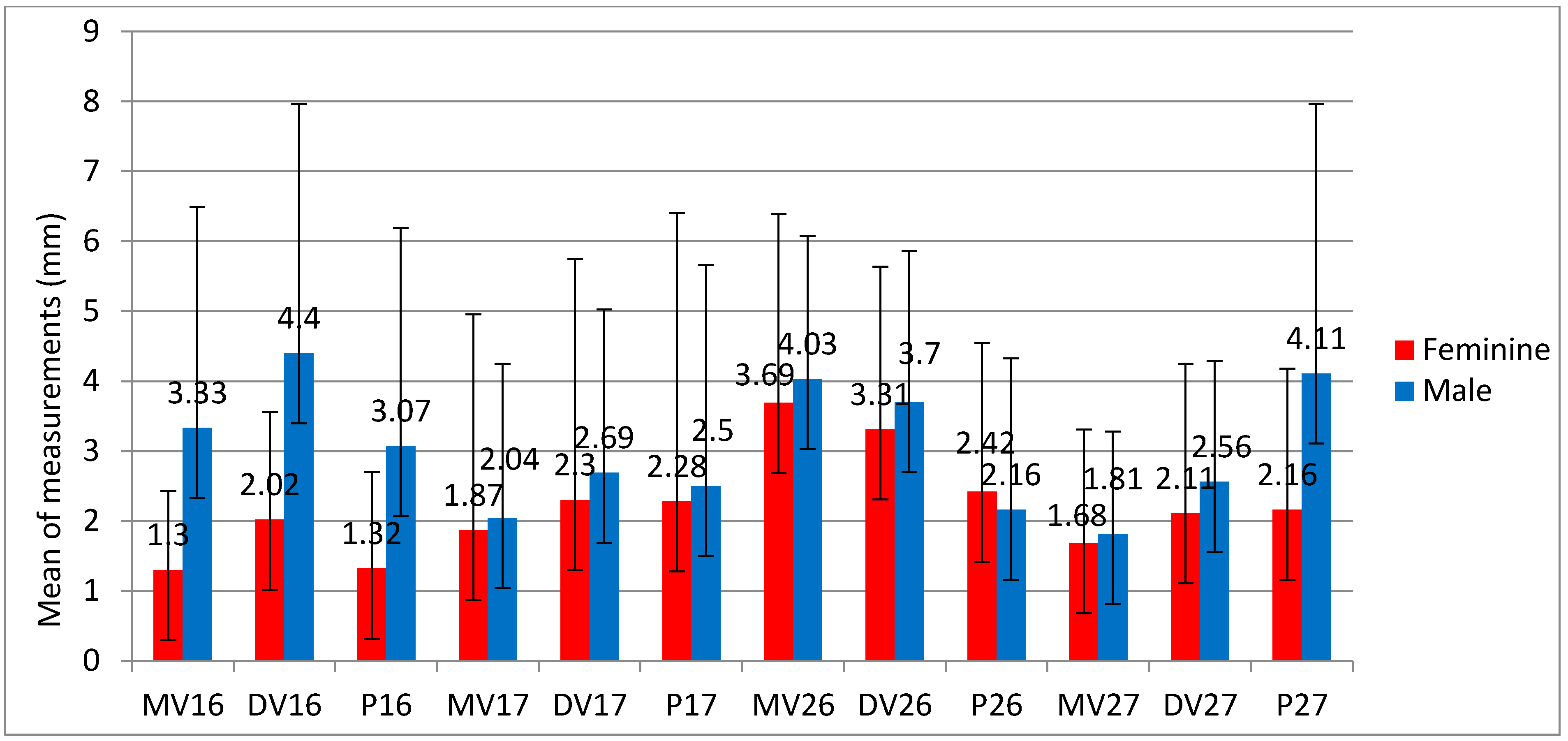
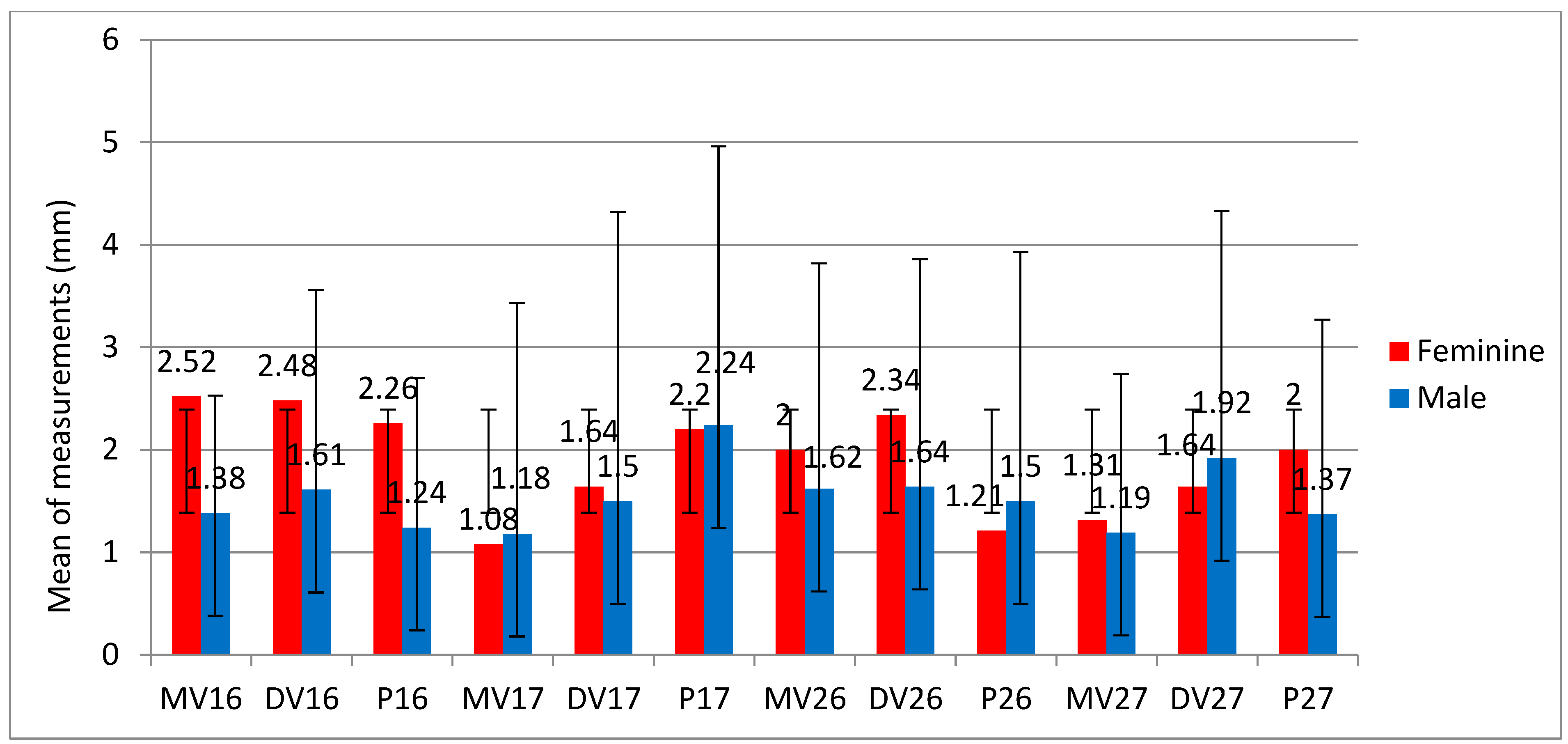
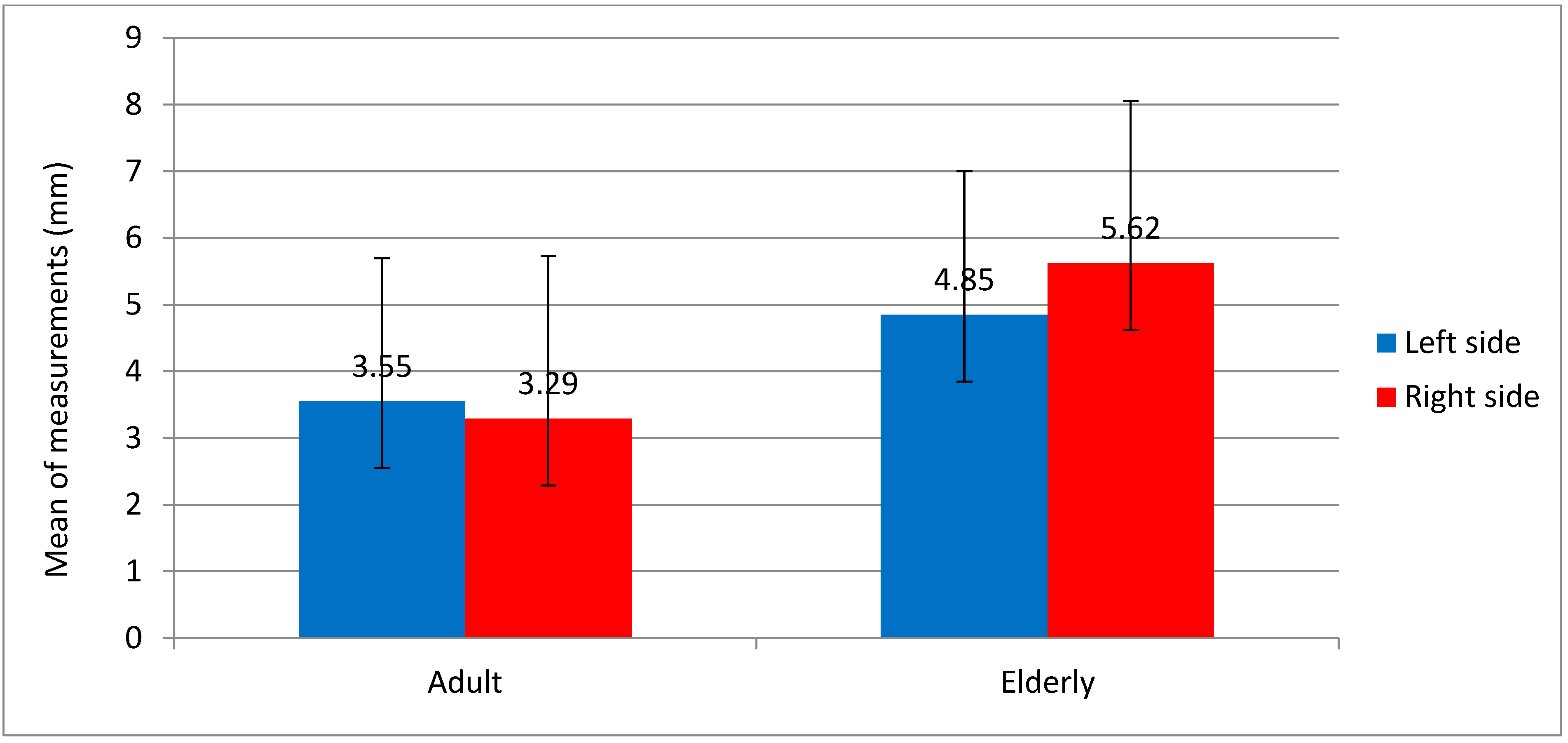
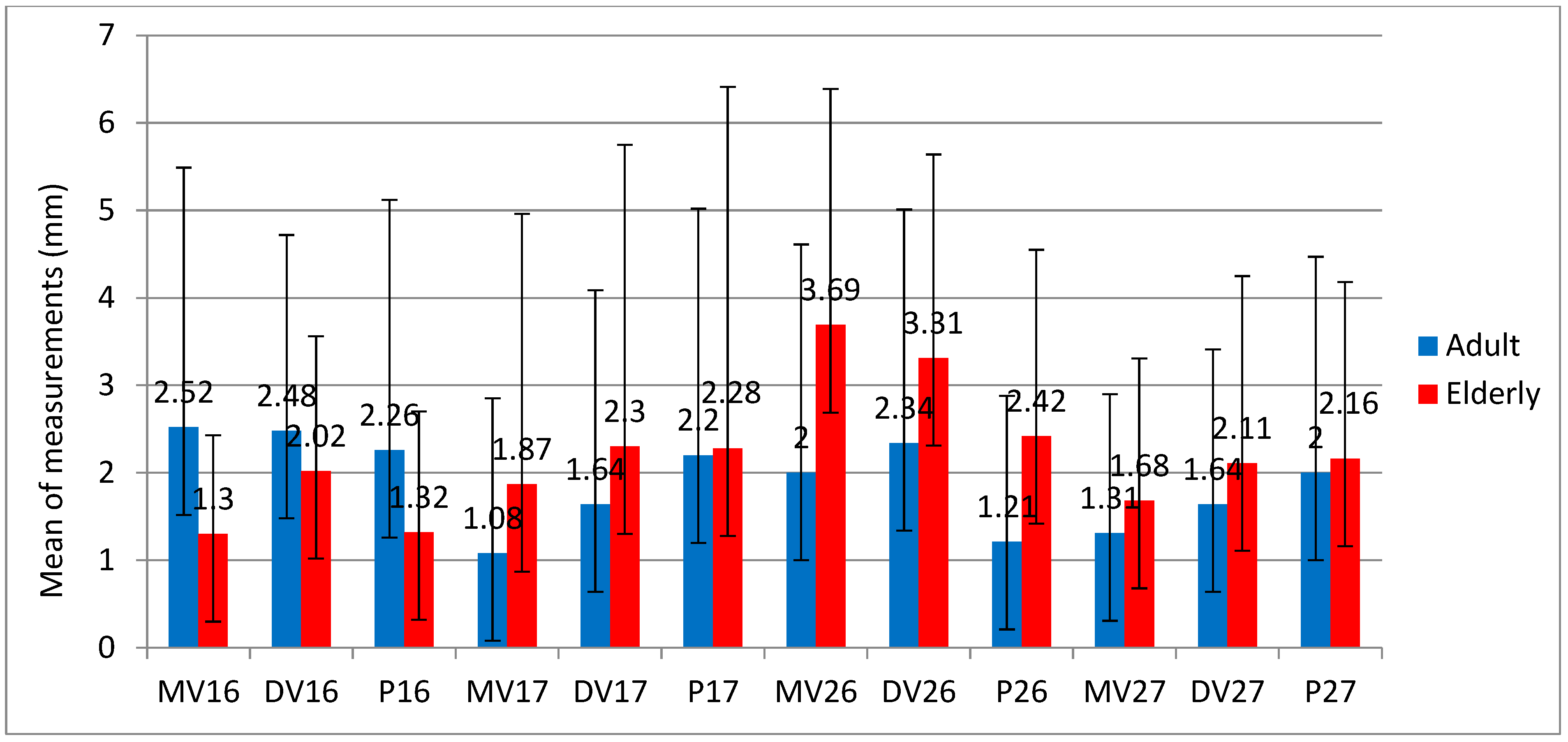

| Adult Group | Overall Median (Min–Max) | Female Median (Min–Max) | Male Median (Min–Max) |
|---|---|---|---|
| MB 16 | 1.63 (0.00–16.29) | 2.31 (0.00–16.29) | 1.50 (0.00–4.80) |
| DB 16 | 1.79 (0.00–10.09) | 2.04 (0.00–10.09) | 1.28 (0.00–5.84) |
| P 16 | 1.00 (0.00–12.45) | 1.07 (0.00–12.45) | 0.77 (0.00–5.18) |
| MB 17 | 0.42 (0.00–11.87) | 0.41 (0.00–9.40) | 0.21 (0.00–11.87) |
| DB 17 | 0.70 (0.00–13.76) | 0.86 (0.00–10.64) | 0.00 (0.00–13.76) |
| P 17 | 1.29 (0.00–12.27) | 1.28 (0.00–11.92) | 1.50 (0.00–12.27) |
| MB 26 | 1.07 (0.00–11.14) | 1.28 (0.00–11.14) | 0.86 (0.00–9.72) |
| DB 26 | 1.09 (0.00–11.19) | 1.72 (0.00–11.19) | 0,89 (0.00–7.89) |
| P 26 | 0.64 (0.00–10.68) | 0.70 (0.00–6.67) | 0.50 (0.00–10.86) |
| MB 27 | 0.86 (0.00–6.36) | 0.92 (0.00–5.63) | 0.64 (0.00–6.36) |
| DB 27 | 1.10 (0.00–8.85) | 1.23 (0.00–5.96) | 0.89 (0.00–8.85) |
| P 27 | 1.14 (0.00–9.71) | 1.50 (0.00–9.71) | 1.03 (0.00–9.20) |
| Elderly Group | Overall Median (Min–Max) | Female Median (Min–Max) | Male Median (Min–Max) |
|---|---|---|---|
| MB 16 | 2.31 (0.00–16.29) | 1.3 (0.00–16.29) | 3.33 (0.00–4.80) |
| DB 16 | 3.21 (0.00–10.09) | 2.02 (0.00–10.09) | 4.4 (0.00–5.84) |
| P16 | 2.19 (0.00–12.45) | 1.32 (0.00–12.45) | 3.07 (0.00–5.18) |
| MB 17 | 1.95 (0.00–11.87) | 1.87 (0.00–9.40) | 2.04 (0.00–11.87) |
| DB 17 | 2.49 (0.00–13.76) | 2.3 (0.00–10.64) | 2.69 (0.00–13.76) |
| P17 | 2.39 (0.00–12.27) | 2.28 (0.00–11.92) | 2.5 (0.00–12.27) |
| MB 26 | 3.86 (0.00–11.14) | 3.69 (0.00–11.14) | 4.03 (0.00–9.72) |
| DB 26 | 3.5 (0.00–11.19) | 3.31 (0.00–11.19) | 3.7 (0.00–7.89) |
| P26 | 2.29 (0.00–10.68) | 2.42 (0.00–6.67) | 2.16 (0.00–10.86) |
| MB 27 | 1.74 (0.00–6.36) | 1.68 (0.00–5.63) | 1.81 (0.00–6.36) |
| DB 27 | 2.33 (0.00–8.85) | 2.11 (0.00–5.96) | 2.56 (0.00–8.85) |
| P27 | 3.13 (0.00–9.71) | 2.16 (0.00–9.71) | 4.11 (0.00–9.20) |
Disclaimer/Publisher’s Note: The statements, opinions and data contained in all publications are solely those of the individual author(s) and contributor(s) and not of MDPI and/or the editor(s). MDPI and/or the editor(s) disclaim responsibility for any injury to people or property resulting from any ideas, methods, instructions or products referred to in the content. |
© 2025 by the authors. Licensee MDPI, Basel, Switzerland. This article is an open access article distributed under the terms and conditions of the Creative Commons Attribution (CC BY) license (https://creativecommons.org/licenses/by/4.0/).
Share and Cite
Constantino, T.M.; Marceliano-Alves, M.F.V.; Ronquete, V.; da Silva Limoeiro, A.G.; Amoroso-Silva, P.A.; Pedano, M.S.; Boukpessi, T.; Vidal, F.; de Carvalho Coutinho, T.M. The Effect of Age and Gender on the Distance Between the Maxillary Sinus Cortical Bone and Maxillary Molars: A Cone-Beam Tomography Analysis. Sinusitis 2025, 9, 9. https://doi.org/10.3390/sinusitis9010009
Constantino TM, Marceliano-Alves MFV, Ronquete V, da Silva Limoeiro AG, Amoroso-Silva PA, Pedano MS, Boukpessi T, Vidal F, de Carvalho Coutinho TM. The Effect of Age and Gender on the Distance Between the Maxillary Sinus Cortical Bone and Maxillary Molars: A Cone-Beam Tomography Analysis. Sinusitis. 2025; 9(1):9. https://doi.org/10.3390/sinusitis9010009
Chicago/Turabian StyleConstantino, Thaysa Menezes, Marília Fagury Videira Marceliano-Alves, Vivian Ronquete, Ana Grasiela da Silva Limoeiro, Pablo Andres Amoroso-Silva, Mariano Simon Pedano, Tchilalo Boukpessi, Fábio Vidal, and Thais Machado de Carvalho Coutinho. 2025. "The Effect of Age and Gender on the Distance Between the Maxillary Sinus Cortical Bone and Maxillary Molars: A Cone-Beam Tomography Analysis" Sinusitis 9, no. 1: 9. https://doi.org/10.3390/sinusitis9010009
APA StyleConstantino, T. M., Marceliano-Alves, M. F. V., Ronquete, V., da Silva Limoeiro, A. G., Amoroso-Silva, P. A., Pedano, M. S., Boukpessi, T., Vidal, F., & de Carvalho Coutinho, T. M. (2025). The Effect of Age and Gender on the Distance Between the Maxillary Sinus Cortical Bone and Maxillary Molars: A Cone-Beam Tomography Analysis. Sinusitis, 9(1), 9. https://doi.org/10.3390/sinusitis9010009







